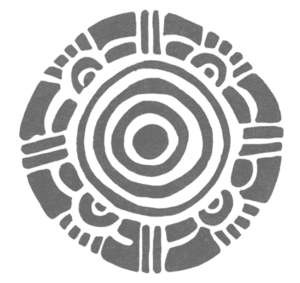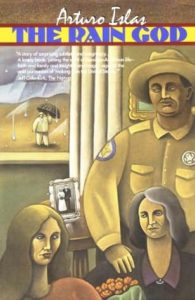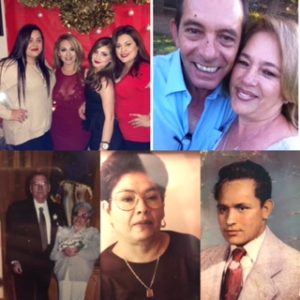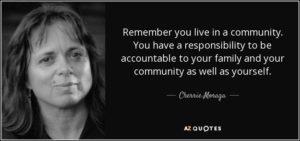
“Te Amo Mas Que Me Vida”
URL of Altar: https://flipagram.com/f/y3sJ6w9JYO
The alter I created is for my beloved uncle, Ricardo Cano Zamora, who has passed on two years ago. His death impacted my life and my family’s lives because he was very important to us in many ways. My uncle, Ricardo, is my mother’s oldest brother. My mother treated him like her son because when they were very young, their father walked out of their lives. So my uncle was always around me and my sisters. He was like a second father to us because he gave us a lot of love and time. My uncle never got married or had kids, so we were like his children.
Throughout my uncle’s life, he had to deal with poverty, alcoholism, and drugs. My uncle had a tough outlook in life and was always struggling with his drug and alcohol addiction. Although, my uncle was an alcoholic and was addicted to drugs, he never brought that lifestyle to me and my sisters. He kept that very private, but of course, my mother knew and her family members. Once, my sisters and I got older, we started to understand why he was in jail for so many years and why he got addicted to alcohol and drugs.
I decided to create an altar to honor his life and his death, because despite all his flaws, I loved him very much and he was very important to me and my family. My uncle was my hero and without him I feel incomplete. My uncle was very important and significant to me because despite him being all crazy into his addictions, he was always loveable with my sisters and I. My uncle loved us unconditionally, and so did we. My uncle was the black sheep of his family and he did not follow the traditional Chicano/a family structure. My uncle was a drunk and drug addict, which pushed many individuals away from him because to them he was not “normal”, or “he needed help”. But yet, no one offered to help him, only my mother.
After he was out of jail, he got deported back to Mexico, so I did not always have the chance to see him. I would only see him when I would go to visit for vacation. It was hard being away from him, but I knew that there was not much I can do. Throughout his years living in Mexico, he started to become ill and never went to the doctor. All he would say was that he was fine and it was just a cold. My uncle was a very brave person and did not like any of us worrying about him. His lack of not taking care of himself put him a rough situation. In his last days of being alive, he finally went to the doctor but it was too late. The doctor had diagnosed him with Hepatitis C and the sickness was advanced. They gave him three days of life, so my family and I rushed to Mexico within the next day but it was too late. Later that night, he had passed away and we were barely heading over to Mexico.
Before he died, he became very religious and gave himself to God, so he became clean and did not do drugs or drink alcohol. He was a man of the Lord and he was very into going to church and devoted to God. So in the altar I created, I placed all religious items like the bible, in which he loved. My uncle also loved to smoke cigarettes so I placed one cigarette for him because it was something he enjoyed to do. I put many of him pictures and pictures that my family had with him. I put holy water and placed bread for him as well. Overall, my altar included religious beliefs like rosaries, bibles, picture of saints and god, flowers, and holy water, because before passing away, my uncle devoted his time to being into all religious practices.
One of my favorite items in the altar I created for him was, his picture, because it made the altar relevant and his face in the picture looks like it is lit up and happy. I set his picture in a frame and centered it in the middle of the table and then added all the other items around his picture. My second favorite item is the bible I set right next to his picture. The bible is an important and significant item in the altar because my uncle was a son of God and God had forgave him for all of my uncle’s sins. The bible is an important item in our family as well so it was important for me to place it in his altar. The third item I placed in his altar is a cigarette, like I stated before, my uncle loved to smoke cigarettes on his free time so it was an important item to be placed in his altar. I am pretty sure he was happy I placed his favorite hobby in his altar.
The fourth item I placed in his altar is a cellphone. Why a cellphone you may ask? Well, my uncle loved to be on his phone and be on social media, listen to music, and play games on his phone. I know the cellphone kept him alive for a couple of months so that is why the cellphone was a significant item in his altar. Before he passed away, he had told me that his cellphone was not working so I was going to buy him a new one so I can take it to him when I visited him. But unfortunately, I did not make it in time and it was just a thought which is why I was so upset and I had to add a cellphone in his altar.
The fifth item placed in his altar was God figures and saints. These items are significant to him and to myself, because like I had stated, my uncle became very close to God and would always be at church. My uncle had God images everywhere, like his phone and his room. These items are significant to me and my family because my family is very in touch with God and are religious individuals so growing up that is what I was taught. God brings us hope, faith, and happiness, so I connected this to my uncle because I had a lot of hope for him to get better and healthy again. I also added rosaries because my uncle was had a rosary on his body and in his room. The rosary also reminded me of the time I saw him for the last time in his casket. It was a horrible feeling but I saw that rosary and I knew he was with his father, which is, God.
My uncle brought so much happiness to my life so that is why I added flowers in his altar as well. These flowers are significant because they mean life, love, and happiness to me. These flowers made the whole altar feel like home and welcoming. I choose orange and yellow flowers because it was the colors of fall and these colors were bright and vibrant to bring life to his altar. I added candles of the Virgin Mary and Jesus Christ to his altar and every day and every night I light up the candles to let him know I am always thinking of him and be will always be in my mind and my heart. The last item I added to his altar is a saint figure, who is very special to me and my family, that saint figure is named La Rosa Mistica. La Rosa Mystica is a blessed Mary who create miracles and gives individuals hope. My family always prays to her and miracles come true because of her. When my uncle was very sick, I would pray to La Rosa Mystica to help my uncle get better because I needed him in my life. La Rosa Mystica is very significant in his altar because she brought me peace during his sickness and after his death.
I had fun creating this altar for my uncle, I know he enjoyed his altar and he is happy I gave him a place of his own in our home. My mom had made an altar for him but did not include many things, so I fixed it up for my mother as well. When my mother saw my altar, she started to cry of happiness and told me that she knows my uncle is in heaven looking down on us and thanking us for remembering and celebrating his life. My uncle still lives in us and we will always have the best memories because of him and for that I thank him. The only downside of him not being here is that my children will never met him. I only can show them pictures of him and talk about the memories he gave me.








